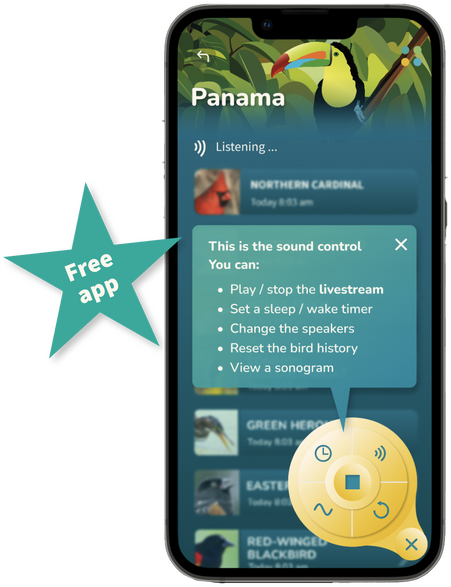
Bird Sounds
Birdsong and Bliss
Quick Facts
Bird Sounds
Birdsong and Bliss

You would think that being awakened by an unknown noise at the crack of dawn would be an annoyance. Often, it can be: I’ve been startled from my slumber by crashing cars, squabbling neighbors, police sirens, ambulance whines, and the clanging and crunching of garbage trucks. I didn’t enjoy any of those experiences.
Yet lately, with the dawning of the day and the blossoming of spring, I awake to a different sound: birdsong. Our home is bordered by a forest on one side, and the bedroom window is adjacent to half a dozen trees. The dawn chorus features robins, finches, cardinals, jays, wrens, and sparrows. My eyes open slowly, but peacefully, to their daybreak chorus. I find it both charming and incredibly peaceful.
The evening may bring different vibrations: the cooing of Mourning Doves, the honking of a platoon of Canada Geese in V formation, soaring to a splash landing in the nearby bay. These are also settling, grounding sounds that bring the day to a mindful conclusion.
Writers and other artists have long known the gentility that avian music brings to us, free of charge: William Shakespeare included a refrain in As You Like It:
A poet after Shakespeare, 17th-century Englishman William Congreve, wrote of music “having charms to soothe the savage breast” (not “beast,” as it is often misquoted).
What is bird song, after all, but another form of music? And how often do we use music as therapy, be it through active singing and dancing, or passive listening?
Dr. Eleanor Ratcliffe of the University of Surrey, England, was quoted in an article on the Natural History Museum’s website (nmh.ac.uk): “People like listening to bird sounds which are quiet, high frequency, or have a level of complexity such as a melody”.
Recent studies have shown that human reaction to birdsong is overwhelmingly positive and calming. Birdsong is piped into classrooms in Liverpool, England, to encourage student focus after breaks. Birdsong is even piped over the intercom system of a national airport in Holland, to have a mellowing effect on what is for most people a stressful environment.
What we’ve learned from the pandemic is that nature’s touch is an overall panacea: walking in the woods, digging in the garden, swimming in the ocean, and birdwatching itself. It’s as if humankind is learning to be a part of, and not apart from, all that surrounds us. And the natural soundtrack to that is the peeping, cheeping, tweeting, and cackling of our avian friends.
Dr. Ratcliffe reported in 2020 that during pandemia, 73 percent of people in lockdown reported hearing louder birdsong. Is it just that “normal,” pre-pandemic life shut down some of those natural aural pathways? (by the way, most also reported that the sound brought comfort and calm).
Listening to birdsong can also unite us with fellow birders—in my case, there’s always someone who knows a bit more than I do and can pick out a song more readily. It’s another way of sharing information and becoming part of a community, if that’s your thing.
We had a young man join our local Audubon chapter several years ago who was legally blind. But he was an ace at identification by song, so he instantly upped our game. His “disability” was converted into a birding superpower.
Immersion in the communication between birds also makes us, in a way, linguists. Walking by the shore or through the woods and trying to identify the various sound patterns heightens our experience—like being in an airport café and trying to suss out the languages being spoken at adjacent tables: is that French? Czech? Japanese? Similarly, on an a.m. birding outing we ask ourselves: Jay? Crow? Hawk? Being cognizant of avian sounds puts us even more in the moment.
Naturally, the advancing world of apps and smartphones has made birdsong identification easier. 15 years ago I bought a book published by Chronicle Books of San Francisco called—you guessed it—Birdsong—which played back 250 North American species. It’s a rather bulky, heavy book designed for a coffee table, and it requires three AA-batteries.
Now, we can get all that information on a pocket phone: The Terra device streams birdsong straight into your living room, and you can listen to the sounds of your own yard, or to soundscapes from curated sites all over the world. The accompanying Terra app helps you identify precisely what you are listening to. All in real-time and from the comfort of your home. Isn’t that amazing? And much handier than a four-pound book that doesn’t fit in your windbreaker, right?
What bird songs mellow you out? What tools do you use, other than your own ears, to get there? These are things to think about when we ponder our birding habits. And how do birds bring us to a place of bliss?
Tags
Share this Article
stream birdsong from terra curated locations
Try out the Terra app!


..or receive a link to the app by email

Enjoy bird sounds from around the world from our curated locations

BACKYARD BIrDING AND CONSERVATION
Stream & identify the birds in your own backyard
Add a Terra device to your yard or garden to create your own listening location in the app
You can also help researchers with conservation efforts
Orders sent late 2023 ship spring 2024
Find out moreTerra yard sensors
Monitor your yard or garden
Terra will connect to optional sensors that track soil conditions, moisture levels, and weather around the home. Take control whether you’re home or not.
Find out more


